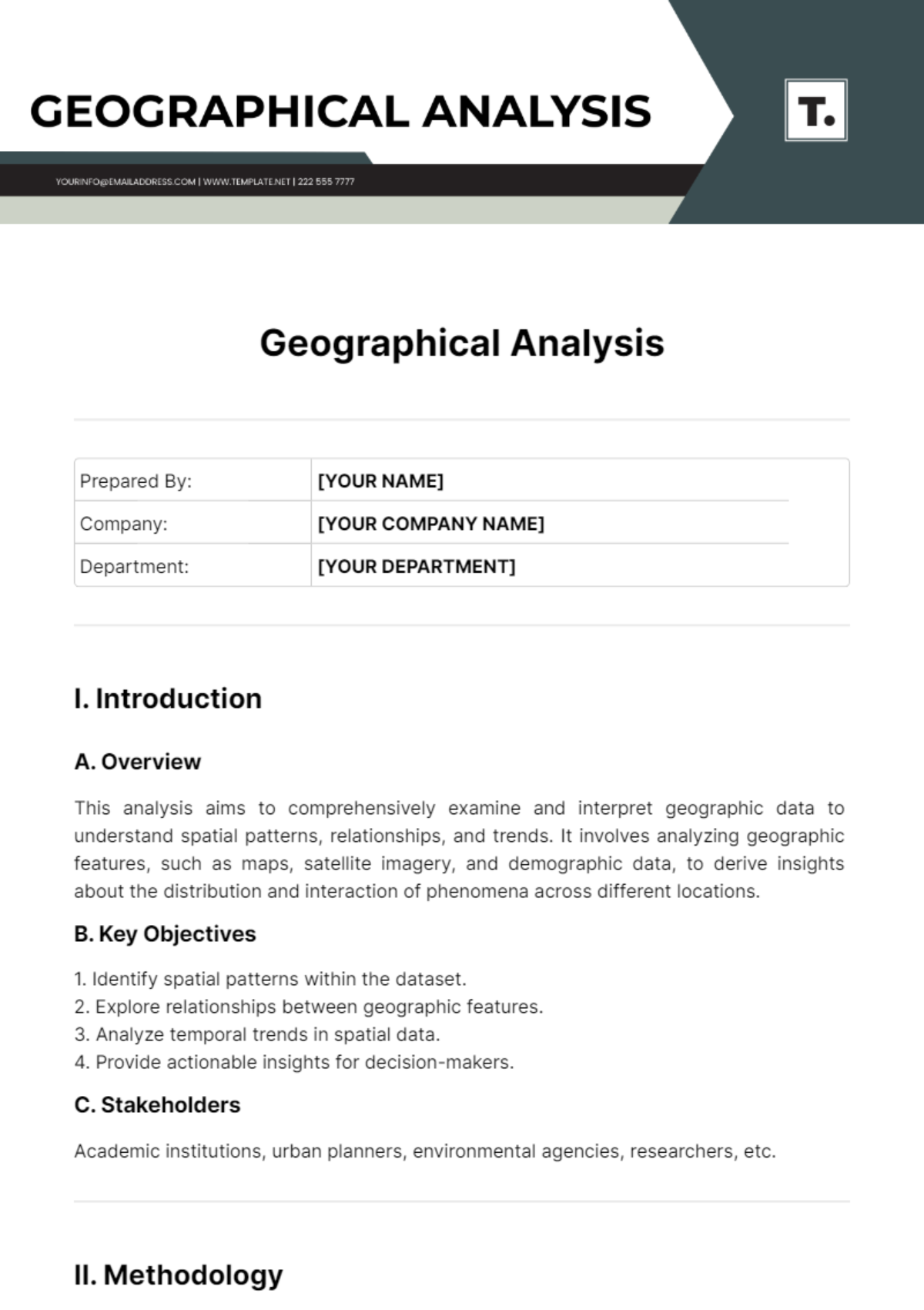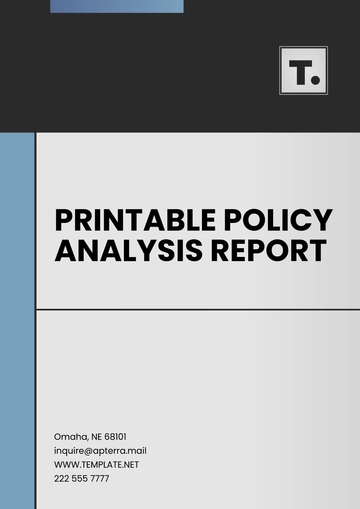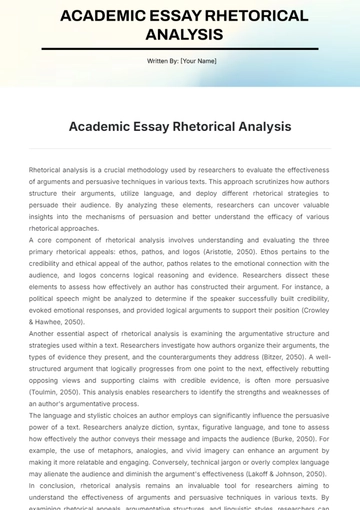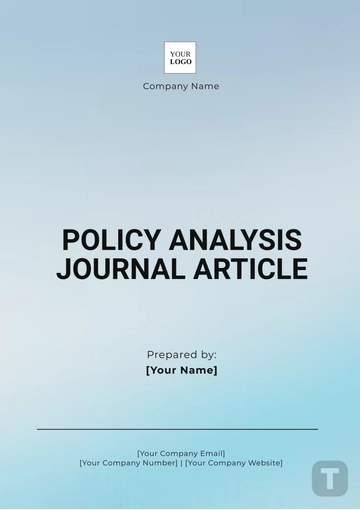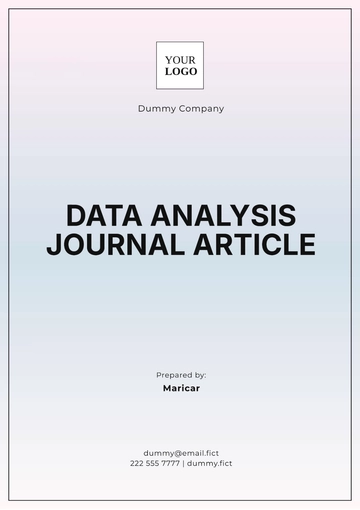Geographical Analysis
Prepared By: | [YOUR NAME] |
Company: | [YOUR COMPANY NAME] |
Department: | [YOUR DEPARTMENT] |
I. Introduction
A. Overview
This analysis aims to comprehensively examine and interpret geographic data to understand spatial patterns, relationships, and trends. It involves analyzing geographic features, such as maps, satellite imagery, and demographic data, to derive insights about the distribution and interaction of phenomena across different locations.
B. Key Objectives
1. Identify spatial patterns within the dataset.
2. Explore relationships between geographic features.
3. Analyze temporal trends in spatial data.
4. Provide actionable insights for decision-makers.
C. Stakeholders
Academic institutions, urban planners, environmental agencies, researchers, etc.
II. Methodology
A. Data Collection
1. Gather satellite imagery from NASA Earth Observing System Data and Information System (EOSDIS)
2. Collect demographic data from the United Nations Department of Economic and Social Affairs (UN DESA).
3. Obtain land use data from the United States Geological Survey (USGS) National Land Cover Database (NLCD).
B. Data Processing
Clean and preprocess raw data using GIS software.
C. Analytical Techniques
III. Spatial Patterns and Relationships
A. Geographic Features
B. Spatial Distribution
C. Interactions
IV. Trends and Implications
A. Temporal Analysis
B. Emerging Trends
C. Implications
V. Conclusion
A. Summary of Findings
B. Recommendations
VI. Appendices
A. Data Sources
Satellite imagery: NASA Earth Observing System Data and Information System (EOSDIS)
Demographic data: United Nations Department of Economic and Social Affairs (UN DESA)
Land use data: United States Geological Survey (USGS) National Land Cover Database (NLCD)
B. Technical Details
Details of GIS software used: ArcGIS Pro, Version 2.8
Parameters used in spatial analysis: Spatial resolution: 30 meters - Projection: WGS84 - Analytical tools used: Spatial Join, Kernel Density, Hot Spot Analysis.
Analysis Templates @ Template.net
